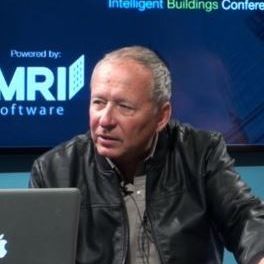In today’s dynamic building management systems (BMS) landscape, the search for specialized talent is more crucial than ever. As technology evolves, so does the need for advanced skills in BMS graphic design, automated systems programming, and more.
Yet, finding the right talent to meet these demands remains a significant challenge for many companies. This article explores the need for a better labor model in the automated buildings industry and how innovative solutions can bridge the gap between talent and demand, ultimately lowering costs and increasing the availability of expertise.
The Growing Complexity of BMS Technology
Building management systems have become increasingly sophisticated, integrating multiple technologies to enhance building efficiency, sustainability, and user comfort. This complexity requires a workforce that not only understands the intricacies of current systems but is also adept at adapting to continuous advancements. Unfortunately, the pool of professionals with such specialized skills is limited and often geographically dispersed, making it difficult for companies to find the right talent locally.
The Traditional Labor Model: Limitations and Challenges
Traditionally, companies have relied on local talent pools or permanent hires to fulfill their BMS needs. However, this approach has several drawbacks:
- Geographical Limitations: High-quality BMS professionals may not be available locally, leading to either prolonged vacancies or the need for costly relocations.
- High Overhead Costs: Permanent hires come with significant overhead costs, including salaries, benefits, and training expenses.
- Inflexibility: The traditional model lacks flexibility, making it challenging for companies to scale their workforce up or down based on project demands.
These limitations highlight the need for a more flexible, cost-effective approach to talent acquisition in the BMS industry.
An Innovative Approach: Leveraging a Global Talent Pool
A more effective labor model would leverage a global talent pool, connecting companies with specialized professionals from around the world. This approach offers several key advantages:
- Broader Access to Expertise: Companies can tap into a wider range of skills and experience, ensuring that they find the best possible match for their specific needs.
- Cost Efficiency: Engaging freelancers or remote professionals can significantly reduce overhead costs associated with permanent hires.
- Scalability: A flexible workforce model allows companies to scale their teams up or down quickly in response to project demands, improving efficiency and responsiveness.
Benefits for Companies
Adopting this innovative labor model can yield substantial benefits for companies in the BMS industry:
- Enhanced Project Outcomes: Access to a global pool of experts ensures that companies can find the right talent to deliver high-quality results on time.
- Streamlined Processes: Modern platforms offer user-friendly interfaces that simplify the process of posting projects, finding talent, and managing contracts.
- Secure Transactions: Built-in secure payment systems ensure that freelancers are compensated fairly and promptly, fostering trust and reliability.
Benefits for Freelancers
For BMS professionals, this model opens up new avenues for career growth and development:
- Global Opportunities: Freelancers can connect with leading companies worldwide, expanding their professional network and gaining exposure to diverse projects.
- Career Advancement: A robust platform allows professionals to showcase their skills, build their reputation, and take on challenging, cutting-edge projects.
- Flexibility: Freelancers can choose projects that match their expertise and interests, providing greater control over their careers.
The Future of BMS Labor Models
The building automation industry is poised for significant growth and transformation over the next five years. Emerging technologies such as IoT, AI, and cloud-based solutions will drive demand for highly specialized skills. In this evolving landscape, a flexible labor model that leverages global talent will be essential for companies looking to stay competitive and innovative.
Companies will increasingly need platforms that can efficiently connect them with top-tier talent, providing both immediate project support and long-term strategic value. For professionals, these platforms will offer unparalleled opportunities for career growth and skill development.
Conclusion
The need for a better labor model in the automated buildings industry is clear. By embracing innovative solutions that connect companies with a global pool of specialized professionals, the industry can overcome traditional constraints, reduce costs, and enhance the availability of expertise. This approach not only benefits companies by improving project outcomes and operational efficiency but also empowers professionals to advance their careers and contribute to cutting-edge developments in BMS technology.
In a rapidly evolving industry, adapting to a more flexible and global approach to talent acquisition is not just advantageous—it is essential for future success. Explore how this new labor model can transform your business and propel your projects to new heights.


